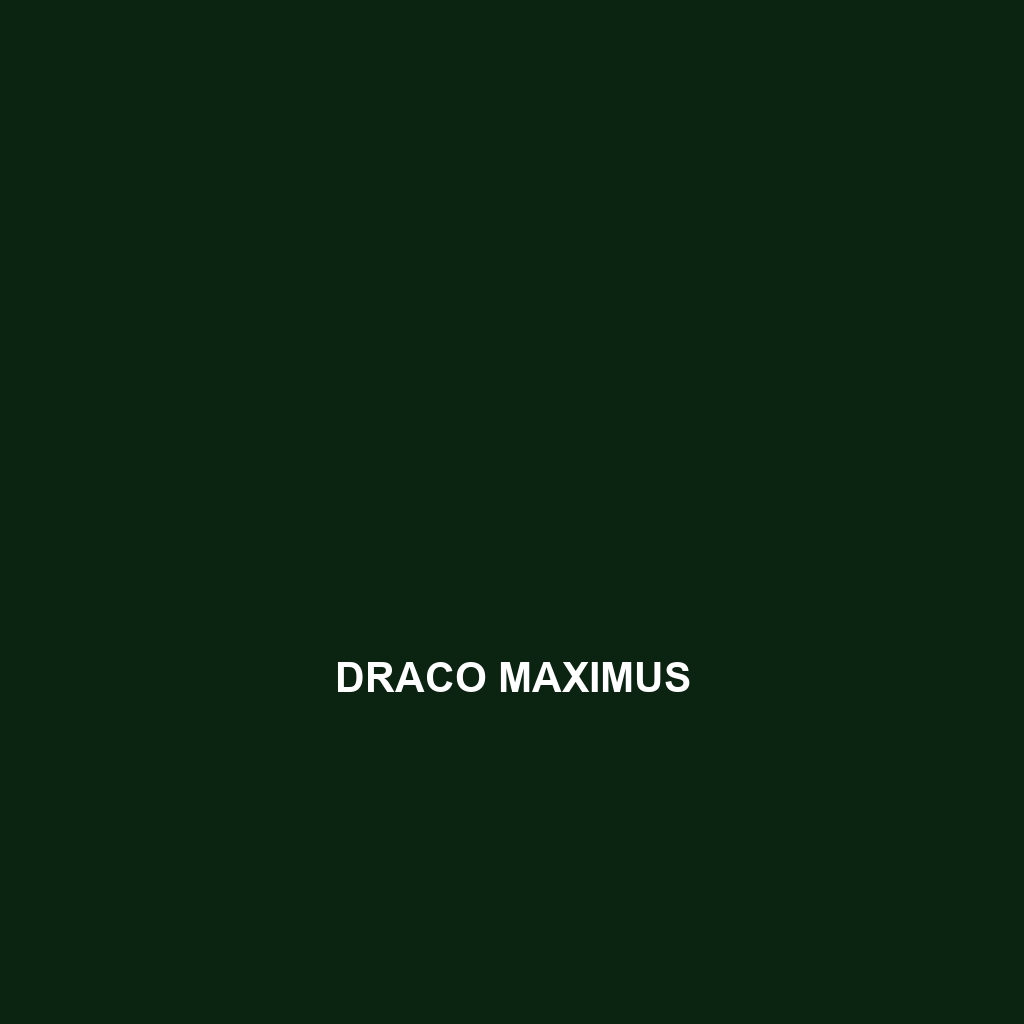Common Name
Draco maximus
Scientific Name
Draco maximus
Habitat
Draco maximus is primarily found in the lush, dense canopies of tropical rainforests across Southeast Asia. This species thrives in humid conditions, often inhabiting regions such as the Malay Peninsula, Borneo, and Sumatra. In addition to rainforests, Draco maximus can also be located in adjacent habitats, including subtropical woods and temperate forests, where the climate allows for sufficient foliage for shelter. Its preference for environments with abundant trees makes it a prominent denizen of multi-layered forests, showcasing remarkable adaptations to live in such biodiverse ecosystems.
Physical Characteristics
Draco maximus exhibits several unique physical traits that distinguish it from other species within the **Draco** genus. This species averages a body length of approximately 35 to 50 cm, with a wingspan that can extend up to 60 cm when its lateral flaps, or “wings,” are fully stretched. Its striking coloration features vibrant green or blue tones adorned with dark streaks, allowing it to blend seamlessly into its leafy surroundings. Notably, the elongated ribs that support its pterophyll (the wing-like lateral flaps of skin) enable it to glide gracefully between trees, an evolutionary trait vital for escaping predators and foraging.
Behavior
The behavior of Draco maximus is as fascinating as its appearance. Primarily a diurnal species, it is most active during the day, utilizing its gliding abilities to traverse the canopy in search of food and mates. Socially, Draco maximus is generally solitary but may be observed in small groups during breeding seasons. Its gliding prowess allows it to cover long distances between feeding sites, and its mating rituals often involve elaborate displays of color and wing expansion to attract potential partners, highlighting their dazzling physical attributes.
Diet
Draco maximus qualifies as an insectivore, favoring a diet that primarily consists of various insects and arthropods. It uses its keen vision to hunt prey from its elevated perch before launching itself into the air to catch its food mid-flight. Additionally, Draco maximus has been observed occasionally consuming nectar, thus displaying an opportunistic feeding behavior that allows it to supplement its diet where insect availability is low. This flexible feeding strategy is crucial given the competition for food resources in its lush habitat.
Reproduction
The reproductive cycle of Draco maximus typically occurs during the rainy season, providing optimal conditions for the survival of offspring. The mating season usually lasts from late spring to early summer. After a gestation period of approximately 60 to 75 days, females give birth to one or two young, which are cared for intensively for several weeks before becoming independent. Nesting usually takes place within tree cavities, where both parents help in protecting and feeding their young until they are capable of foraging for themselves.
Conservation Status
The conservation status of Draco maximus is currently classified as “Vulnerable” by the International Union for Conservation of Nature (IUCN). Deforestation and habitat loss due to agricultural expansion and logging pose significant threats to its populations. Conservation efforts are being implemented in various regions to preserve their habitats, along with community initiatives aimed at sustainable land use practices to mitigate the impacts of human activities on this unique species.
Interesting Facts
One of the most intriguing facts about Draco maximus is its ability to glide over distances of up to 10 meters or more. This remarkable skill not only aids in escaping predators but also serves as a strategic advantage when moving from tree to tree in search of food. Additionally, the species exhibits an unusual behavior where it utilizes its wings to create a barrier between its body and a potential predator. This display of agility and intelligence adds to the fascinating nature of this remarkable species.
Role in Ecosystem
Draco maximus plays a vital role in its ecosystem as both a predator and a pollinator. By controlling insect populations, it helps maintain a balance within its environment and contributes to the health of the forest ecosystem. Furthermore, its occasional nectar feeding can aid in the pollination of various plant species, supporting biodiversity and ensuring the survival of the flora that other forest inhabitants rely on for sustenance. As part of the intricate web of life in rainforests, Draco maximus is essential in fostering a healthy, balanced ecosystem.
